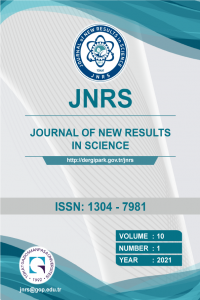Utilization of Selection Indexes for Adaptive Responses of Black Poplar (Populus nigra L.) to Drought Stress
Determination of drought adaptation strategies on plant species is highly important to develop resistant cultivars. Drought resistance mechanisms known as drought escape, avoidance and tolerance should be investigated and associated with several mathematical indices in especially tree species. Therefore, the major aim of this study was to identify drought adaptation strategies with these indices for tree species by using poplar as a model organism. Black poplar clone collection including 300 individuals collected from all around Turkey was tested in a field trial. The growth and biomass production capacities of these individuals with several physiological traits were measured and compared in rainy and drought periods. Mean Relative Performance (MRP) and Stress tolerance Index (STI) were used to identify adaptive responses of black poplar to drought stress. In the study, MRP favored drought tolerant genotypes having the highest biomass production. Genotypes with higher STI values exhibited drought avoidance mechanism which characterized with low productivity but much higher drought resistance. On the other hand, lower STI was associated to drought escape genotypes which revealed the lowest growth performance and the highest defoliation rates under drought. In the current study, relationship between antioxidant enzyme activities and drought adaptations were also investigated on the leaves of selected clones. Higher enzyme activates associated with drought escape strategy in the study.
Keywords:
Populus nigra, drougt, selection index adaptation,
___
- Anjum, N. A., Chan, M.T., and Umar, S. (2010). Ascorbate-Glutathione pathway and stress tolerance in plants. Springer eBooks. 443p
- Asada, K. (1999). The water–water cycle in chloroplasts: scavenging of active oxygens and dissipation of excess photons, Annu. Rev. Plant Physiol. Plant Mol. Biol. 50: 601–639.
- Babu, R. C., Pathan, M. S., Blum, A. and Nguyen, H. T. (1999). Comparison of measurement methods of osmotic adjustment in rice cultivars. Crop Sci. 39: 150–158.
- Blum A, Mayer J, Golan G (1988) The effect of grain number (sink size) on source activity and its water-relations in wheat. Journal of Experimental Botany, 39: 106–114.
- Blum, A. and Arkin, G.F. (1984). Sorghum root growth and water-use as affected by water supply and growth duration. Field Crops Res. 9: 131–142.
- Blum, A. (2005). Drought resistance, water-use efficiency, and yield potential — are they compatible, dissonant, or mutually exclusive? Aust J Agr Res. 56: 1159–1168
- Bradford, M.M. (1976). A rapid and sensitive method for the quantitation of microgram quantities of protein utilizing the principle of protein-dye binding. Anal Biochem. 72 (2): 248–254
- Brent, E. and Bergmeyer, H. V. (1974). Methods of enzymatic analysis (2nd Ed.). pp 1704-1708. Academic Press,London
- Edjolo,A., Laffray, D. and Gilles G. G. (2001). The ascorbate–glutathione cycle in the cytosolic and chloroplastic fractions of drought-tolerant and drought-sensitive poplars. J. Plant Physiol. 158: 1511–1517
- Fernandez, G.C.J. (1992). Effective selection criteria for assessing plant stress tolerance. In: Kus EG (ed) Adaptation of Food Crop Temperature and Water Stress. Proceeding of 4th International Symposium, Asian Vegetable and Research and Development Center, Shantana, Taiwan, pp 257–270
- ISSN: 1304-7981
- Yayın Aralığı: 3
- Başlangıç: 2012
- Yayıncı: TOKAT GAZİOSMANPAŞA ÜNİVERSİTESİ
